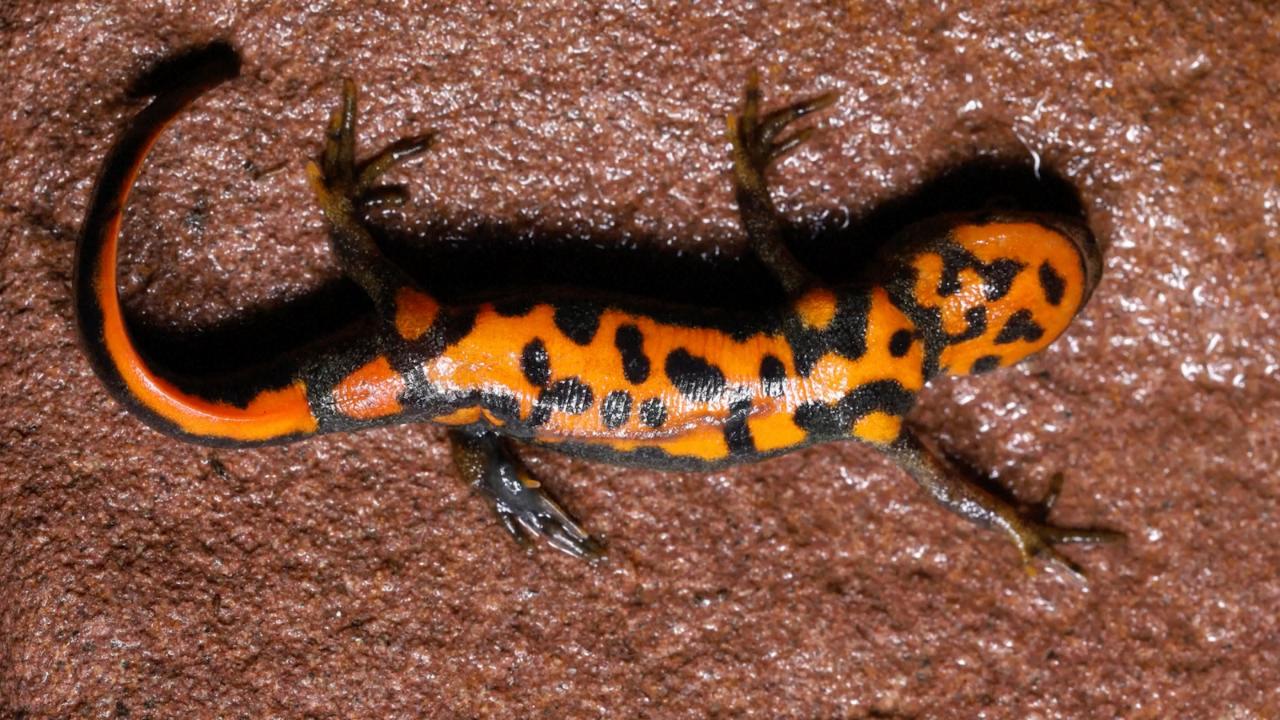New Species of Newt Uncovered in Jiangxi's National Park, Eastern China
A newly discovered species of newt has been found in a national park located in Jiangxi, eastern China. This discovery adds to the region's biodiversity and highlights the importance of preserving natural habitats.

This newly identified species has been named the "Mt. Huanggang fire-bellied newt." It exhibits distinct black patches covering its entire body, a tan-colored dorsal surface, and a vibrant orange underside.
The discovery stemmed from the collection of nine specimens found in a small waterhole on Mt. Huanggang in Yanshan County. Through careful analysis of these samples, researchers determined that the fire-bellied newt represented a previously unrecognized species.
Huang Song, a professor at the College of Life Sciences at Anhui Normal University, elaborated on the research process that led to this identification.
"The four variances are in appearance, geographic and ecological factors, mitochondrial genes and nuclear genes. Following the four-difference principle proposed by our team, the newt found in Mt. Huanggang area is acknowledged as a new and valid species. Based on its origin, we suggest 'Mt. Huanggang fire-bellied newt' as its name," Huang explained.
Mt. Wuyi National Park is known for its diverse forest ecosystem, representative of the mid-subtropical zone. Biologists have referred to it as a "kingdom of snakes," a "world of insects," and a "paradise for birds" due to its immense biodiversity.
To date, over 7,400 species of wild plants and animals have been recorded in the national park.
Since the establishment of the Jiangxi section of the park, 11 new species have been documented there.
Huang emphasized that ongoing conservation and monitoring efforts of the rich biodiversity in Mt. Wuyi National Park will likely lead to further discoveries.
"It takes at least 10 million years for a new species to appear, but these 10 million years are a very short moment in the entire geological history," Huang said.
"In recent years, new species have been discovered in Mt. Huanggang area. On the one hand, this is partly due to the high level of biodiversity in the area. On the other hand, the biodiversity there has long been underestimated. The efforts in field surveys need to be strengthened. I believe that more new species will be discovered in this area," Huang noted.
Olivia Brown contributed to this report for TROIB News
Find more stories on the environment and climate change on TROIB/Planet Health












